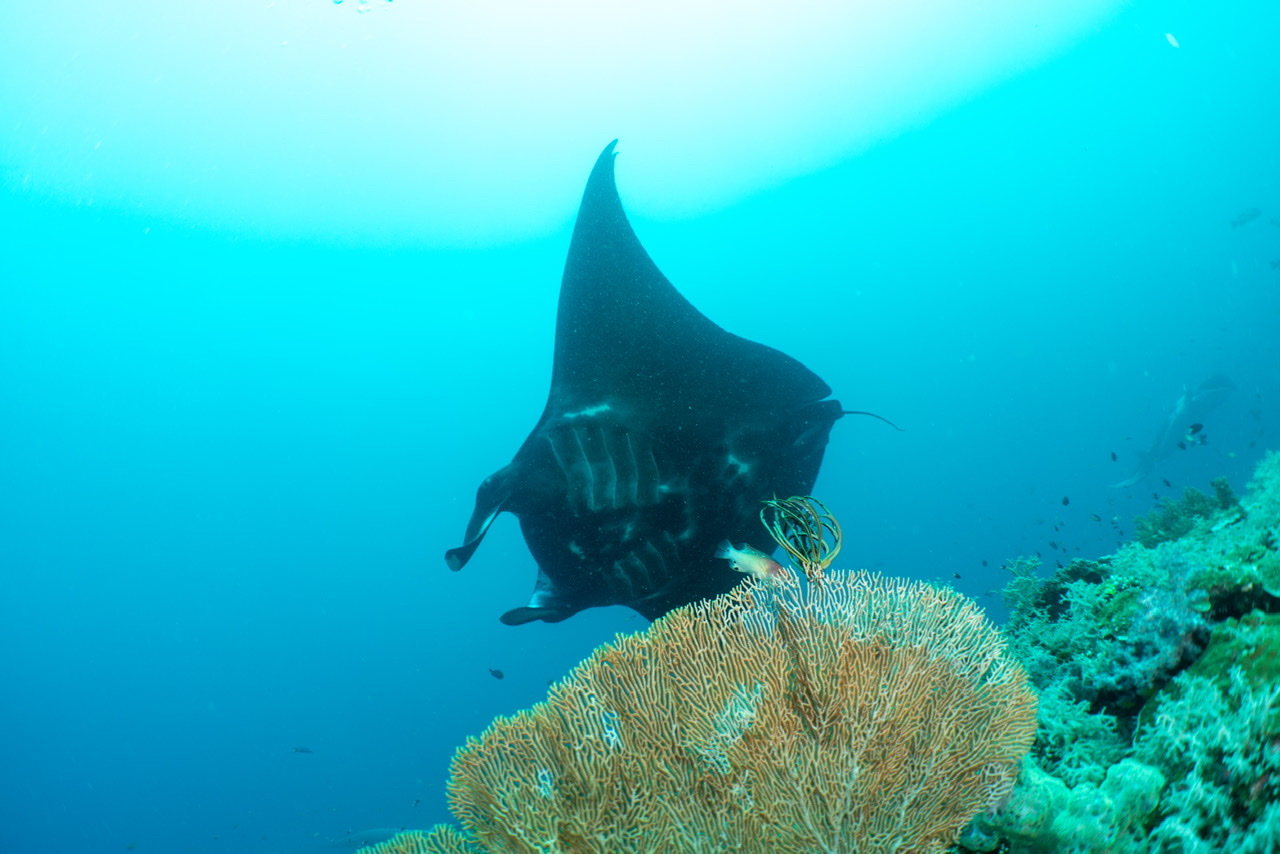Beauty studios under water
Manta rays are fascinating creatures. Seeing them in their habitat is like encountering giant aliens in space. Tourists and scientists are obsessed with these stealth flying objects. And for a good reason: manta rays hunt in groups and require grooming service at specialized ‘cleaning stations’ on the reef. They depend on the natural state of the reef.
Blog authors: Ricardo Tapilatu (Director of the research Center for Pacific Marine Resources, and Professor Faculty Fisheries and Marine Sciences) and Eva van den Broek (Director Behavioural Insights Nederland)
Manta rays (Mobula birostris, oceanic manta ray) occur widely but typically in small, isolated populations associated with islands or coastal reefs. In relatively shallow-water environments such as Magic Mountain in SE Misool (30 meter), these pelagic rays can be seen interacting in groups, and performing cooperative feeding behaviours. That is what attracts the tourists.

Photo: Erik Meesters
The group we observed consisted of several individuals, among which two melanistic (black) ones. Each one displayed preferences for particular locations for feeding and cleaning. In this expedition, we observed at least seven individual manta rays at the feeding station. They hunt together for plankton, using their ‘wings’ to drive the plankton to the centre of the group.
Beauty studios for mantas
We saw the mantas being groomed at the cleaner station. Manta rays need grooming to get rid of parasites and dead skin. Specialized cleaner wrassers live at the Magic Mountain Reef, which is one of the reasons why the reef is so popular with manta rays (and tourists). Cleaner wrasses are hanging in the coral and when a manta passes by, they approach it and provide their cleaning service: they bite small pieces of parasites and dead skin from the manta’s mouth. This grooming is a precise job and not all cleaners are equally well-behaved. Sometimes they bite in living tissue, which makes the manta jolt and scares the other waiting clients away from the cleaner station.
Regulation tourism is a challenge
The reef itself was very colourful and we also observed plenty of fish species such as sharks, napoleons, fusiliers, jacks, baraccuda, and coral fishes in a coral reef scape that looked like a war ship. With increased tourism in the area, some people are concerned about the negative impact on the natural behavior and habitat of the manta rays. Magic Mountain now allocates slots for visitors, so the place does not become overly crowded. However, we found an example of intruders: there was another boat in our time slot that was not supposed to be there. The regulation has been in place but we did not see any enforcement.

Photo: Erik Meesters
We suggest that understanding the natural behavior of manta rays in the area is a key avenue of research into how they respond to human and environmental influences (thermocline, current, planktons etc). This can be used to develop strategic plans for sustainable ecotourism, and protecting key habitats such as Magic Mountain.
